
Ready for the future with a SaaS ERP solution for the construction industry
Companies in the construction industry are increasingly investing in software that does not run in-house but is offered as a service from the cloud. A well-known example is opting for Microsoft 365 subscriptions instead of installing Microsoft Office on every laptop and computer. The advantages of working in the cloud make many companies think: why not also opt for an ERP solution in the cloud? When searching for more information, you will quickly see terms like SaaS ERP for construction, IaaS or PaaS solutions. Do you know what the differences are? In this blog, we will show you the difference between these cloud types!

The term “cloud” is much older than most people think; since the 1990s, software partners have been developing services that they offer over the Internet. This is exactly what cloud software is: software and services that you purchase via the internet. When we take a closer look at cloud software, we distinguish three categories:
IaaS – Infrastructure as a Service
Infrastructure as a Service, IaaS, is the first layer of cloud computing. With IaaS solutions, you migrate network, storage and servers to a cloud provider of your choice. It is important that your organisation remains responsible for managing the software applications, databases and data. You do not need to invest in hardware, but you do need to have sufficient knowledge and resources in-house to maintain, manage and monitor the performance of the software.
PaaS – Platform as a Service
With Platform as a Service (PaaS), you place a little more management with a cloud provider. In addition to the hardware infrastructure, you also entrust a supplier with the management of the operating system and the configuration of the software. With PaaS services, you therefore focus entirely on the developments in the software and your data.
SaaS – Software as a Service
When people talk about software in the cloud, they are often referring to Software as a Service, or SaaS for short. This cloud variant is by far the best known and has an incredible number of variations. From your personal Gmail and Netflix account to the versatile Microsoft 365 productivity suite and the future-proof ERP package Microsoft Dynamics 365 Business Central in the Microsoft Cloud. With a SaaS solution, you are completely taken care of by the cloud provider. This supplier takes care of everything for you: infrastructure, hardware, management, development and data storage. You purchase the software as a service via the Internet; as a result, you have access to the application and your company data at any time and from anywhere and you always work with the most recent version of the software.
4PS Construct: SaaS ERP solution for the construction industry
4PS Construct, our total solution for the construction industry, is also available as a SaaS solution. Our SaaS ERP solution for construction, installation and civil engineering is based on the most user-friendly and modern platform of the moment: Microsoft Dynamics 365 Business Central. Microsoft is responsible for the availability and maintenance of the software and systems. Because you purchase the software as a service from the cloud, you will also automatically receive several software updates per year. This ensures that you are always using the very latest Microsoft technology, supplemented by 4PS functionalities tailored to the construction industry. The experts from 4PS will support you with every new release, so you can be sure that you are making optimal use of all the new additions!
Curious about the advantages of a SaaS ERP solution for the construction industry? Download our e-book “Why choose a SaaS ERP solution for construction?” and get inspired!

About the author
Elliot Herdman | Elliot has over 20 years experience in the construction industry working with main contractors, subcontractors, M&E, supply and install analysing their business processes and implementing digital software solutions to improve projects, drive efficiencies and meet the growing needs of clients.
